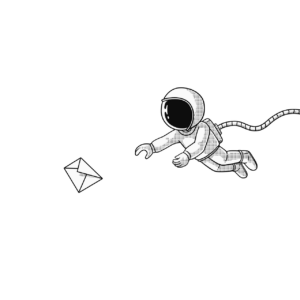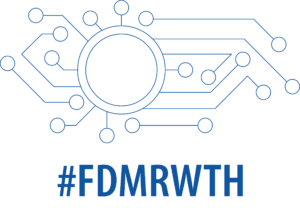
Source: Pixabay
If you want to conduct research at a high level, you inevitably have to deal with research data management and digital long-term archiving to prevent possible data loss. We would like to illustrate why RDM is important and easy to implement, especially in the digital age, using NASA’s Voyager 1 spacecraft as a case study.
There are many good reasons why RDM should be used in science. For one thing, the initial collection of research data not only ties up valuable resources and time, but can also be very expensive. RDM helps to keep these costs as low as possible, as the storage and archiving of research data ensures that they are secured and no new costs are incurred. So once the research data has been collected and is available, it is important to store it sustainably according to good scientific practice. The FAIR principles help with this:
F – Findable
A – Accessible
I – Interoperable
R – Resuable
Research data should be easy to find, accessible, interoperable and reusable. This saves expensive duplication of effort and avoids data loss. With the help of long-term archiving, research data and their long-term subsequent use can be secured and guaranteed over a long period of time. The retention period in many disciplines is now ten years. During this period, data must be regularly checked to ensure that it remains usable.
The goal of long-term archiving is to make the preservation of data authentic, integer, accessible and comprehensible. In addition to providing the technical infrastructure, this also includes organizational measures and the establishment of processes and standards. You can find a detailed report on digital long-term archiving on our RDM blog.
The Worst Case Scenario
A frightening example of what can happen when archived data is no longer accessible is provided by NASA and its Voyager 1 spacecraft. According to heise online, the spacecraft has been sending incorrect data for two months. What is the cause of the incorrect data remains unexplained so far, because the technical documents for Voyager 1 can no longer be found. The reason for this is that these documents were never stored digitally and the data were taken home by the engineers, who are now retired. It is even assumed that the documents are possibly completely lost.
Our Solution: Coscine
Coscine (/ˈkəʊsaɪn/) stands for Collaborative Scientific Integration Environment and is an RDM platform developed at the IT Center of RWTH Aachen University for the free storage, management and archiving of research data. Coscine promotes the preservation of good scientific practice by implicitly supporting FAIR principles at various stages of the research data lifecycle, from storage to archiving. Thanks to simultaneously high technical security and unlimited collaboration possibilities, Coscine is a strong partner for researchers in their daily handling of research data. In the Voyager 1 example, the research data would have been best stored in Coscine via the Research Data Storage (RDS) and described with appropriate metadata. By adding other NASA researchers to the project and automatically assigning a persistent identifier (PID) in Coscine, the data would have been discoverable, accessible, interoperable and re-usable for up to 10 years after the end of the project.
However, if the storage and backup of digital data is to be longer than 10 years, the required transfer of all data and metadata to an LTA institute must take place. The University Library Centre (hbz) is responsible for the long-term availability of digital data in North Rhine-Westphalia in order to make the scientific resources of libraries, universities and other scientific institutions permanently available.
Conclusion
Research data management saves resources and time, avoids potential data loss and legal problems, and also makes research results reproducible and reusable.
Learn More
If you have any questions about our RDM services or about RDM in general, simply write a message to the IT-ServiceDesk. The RDM team is looking forward to your message.
For more information about RDM, also visit the RDM Websites of RWTH Aachen University.
Responsible for the content of this article are Lina-Louise Kaulbach, Ilona Lang and Arlinda Ujkani.





Leave a Reply
You must be logged in to post a comment.